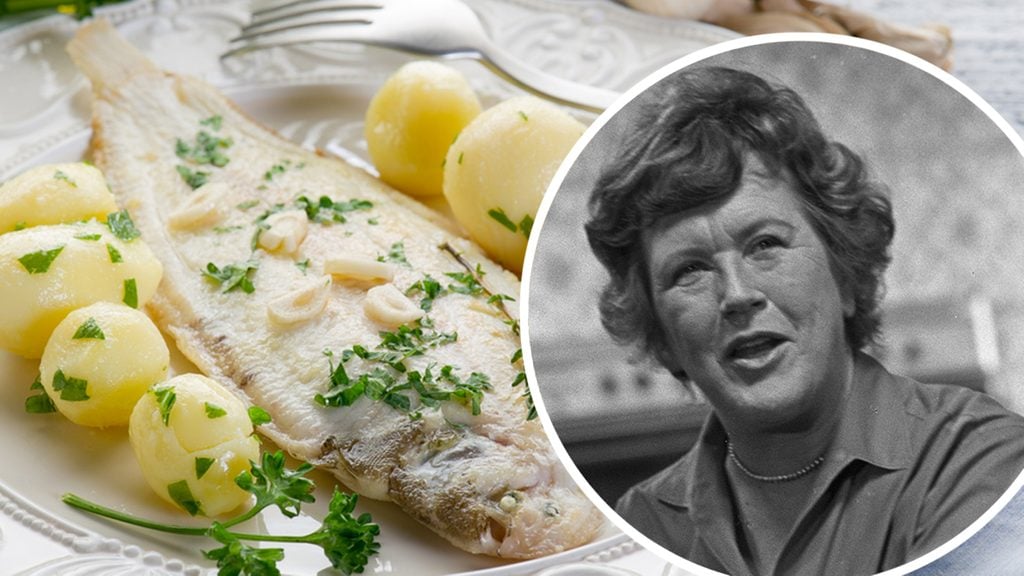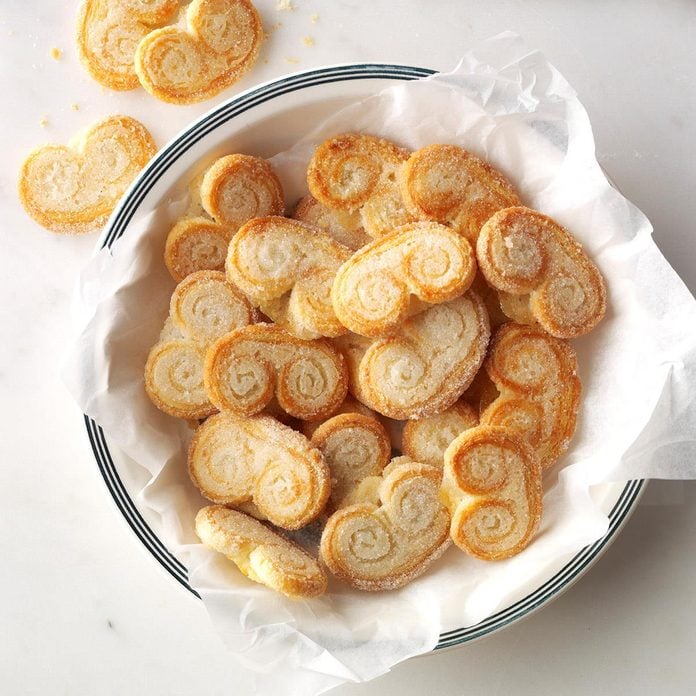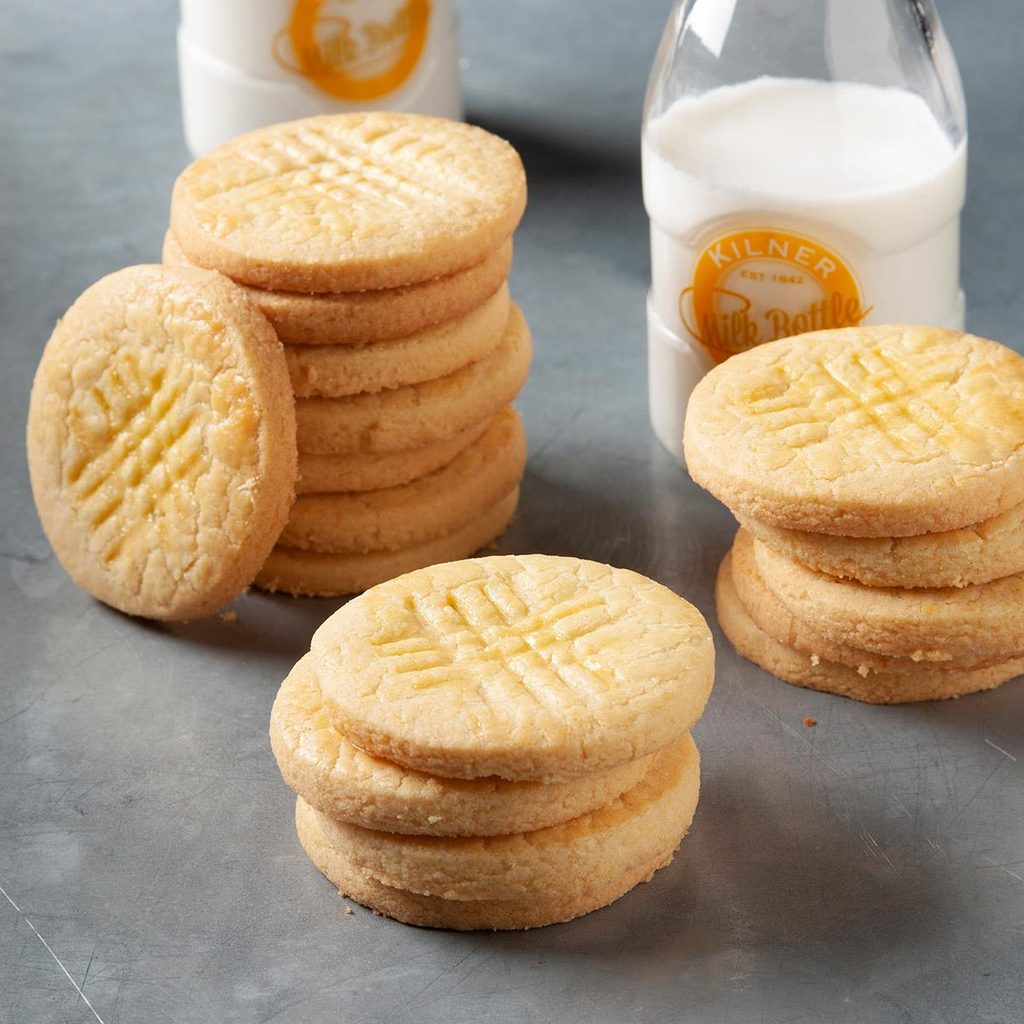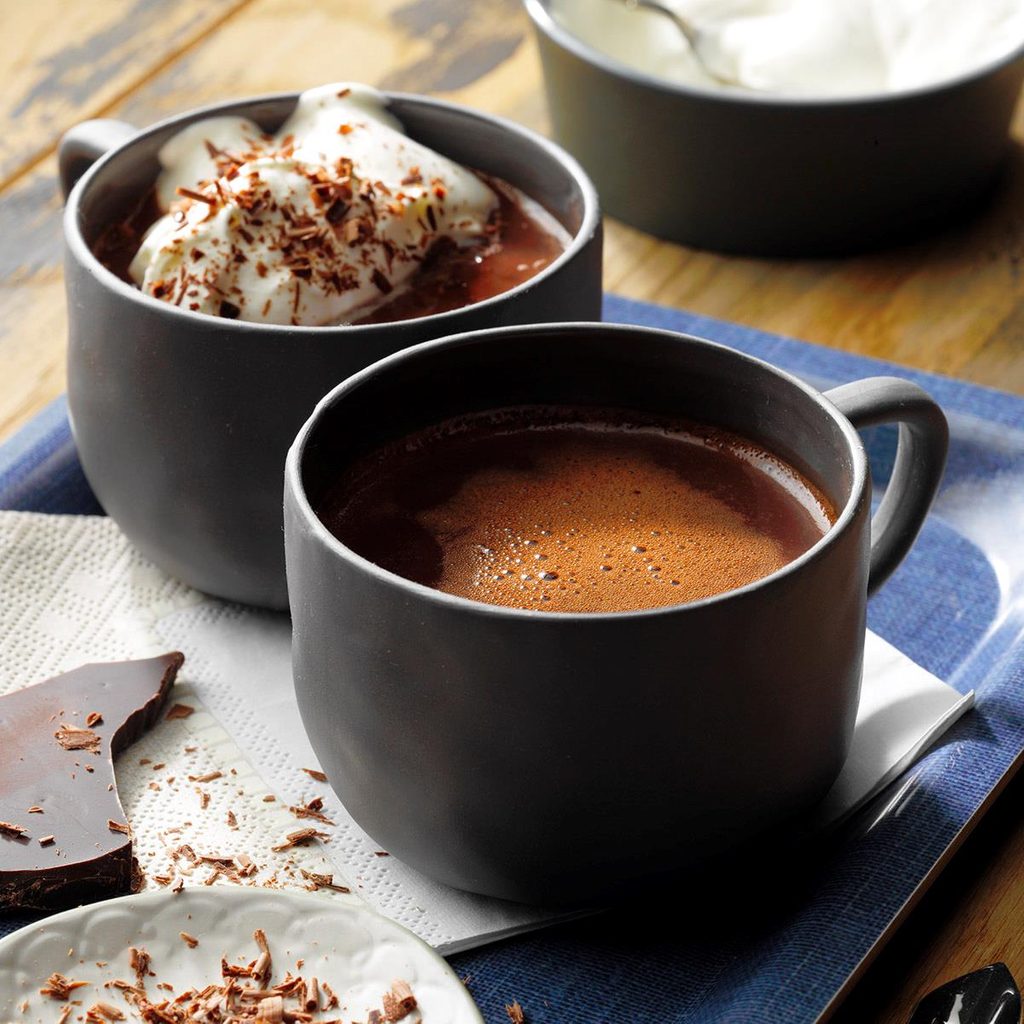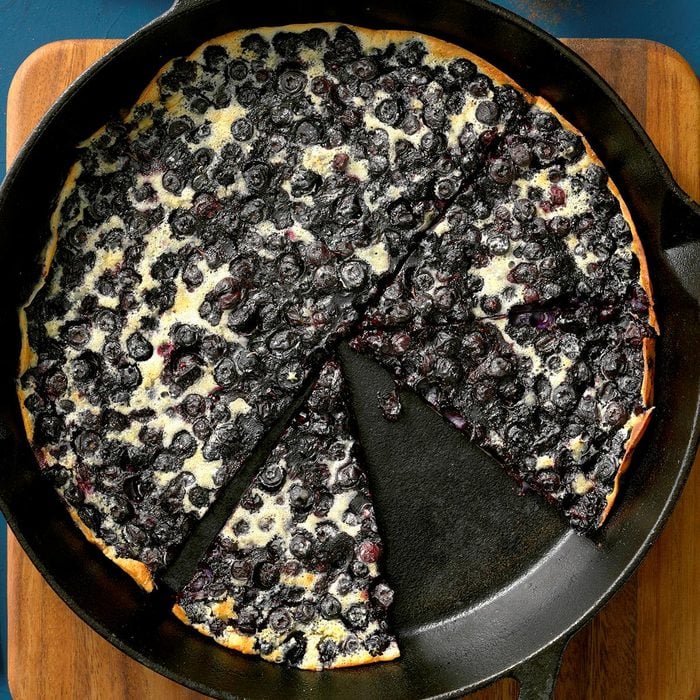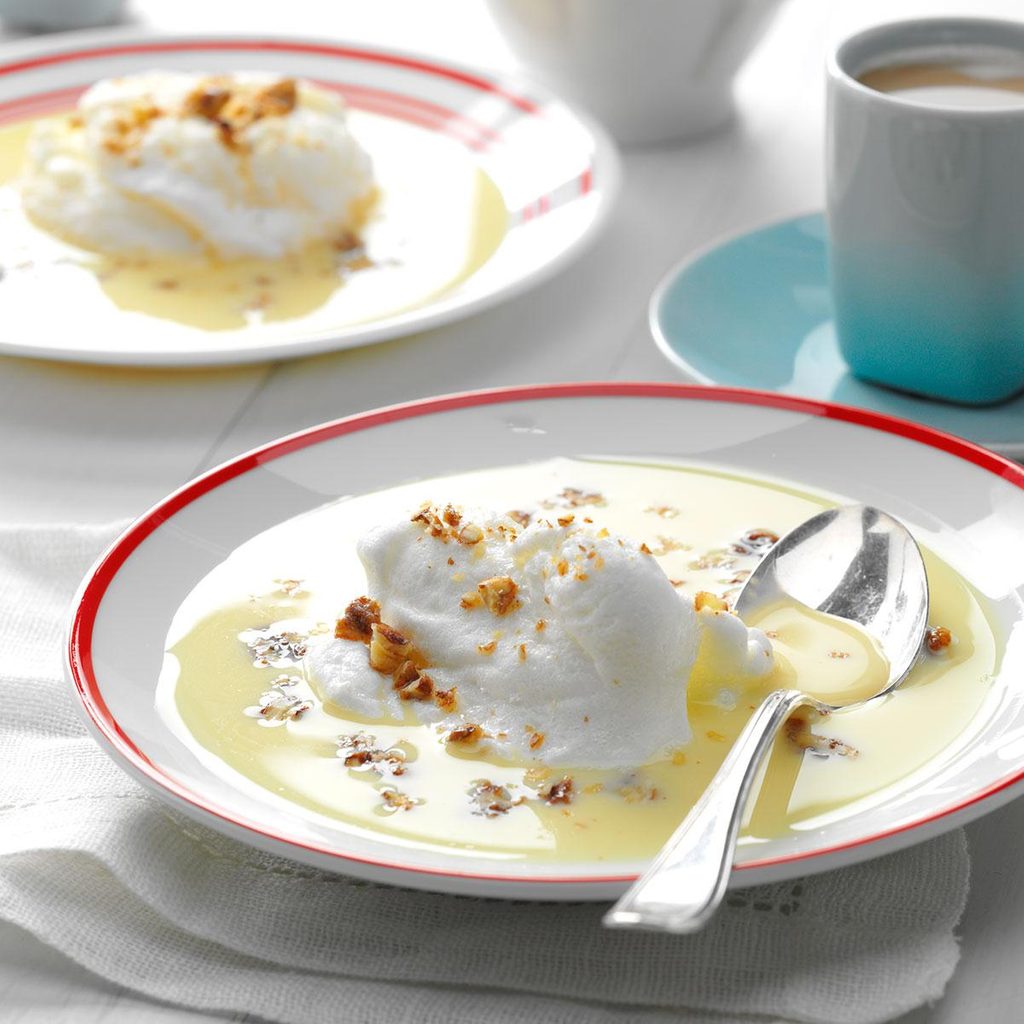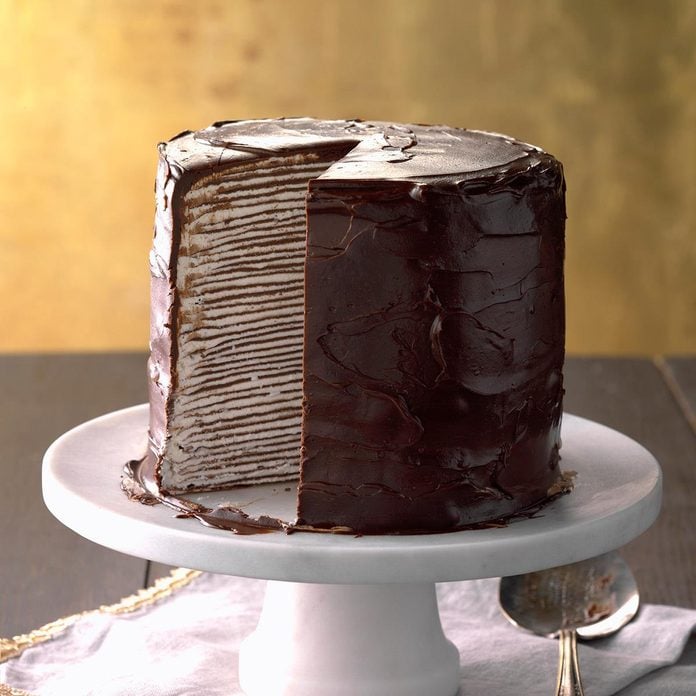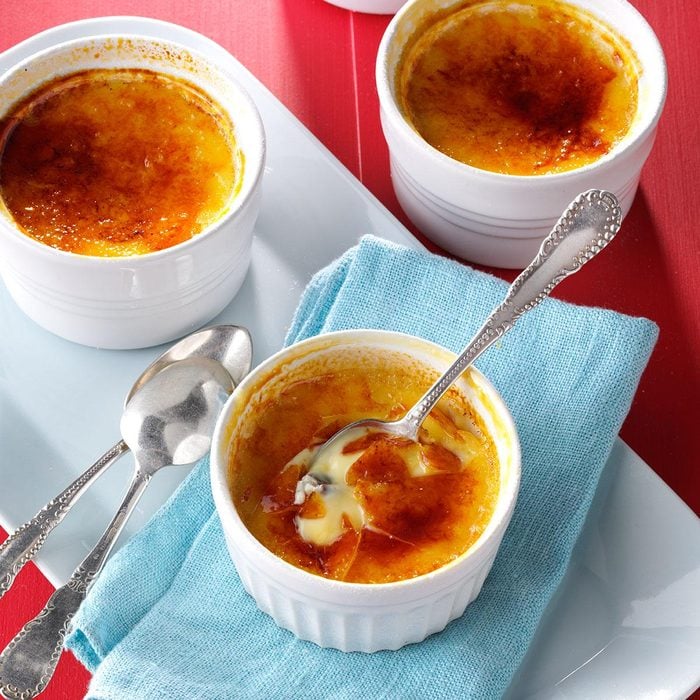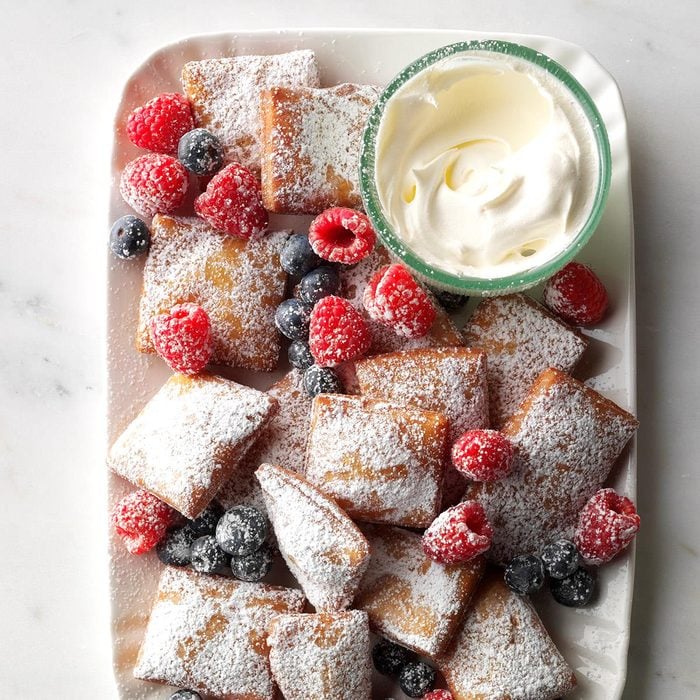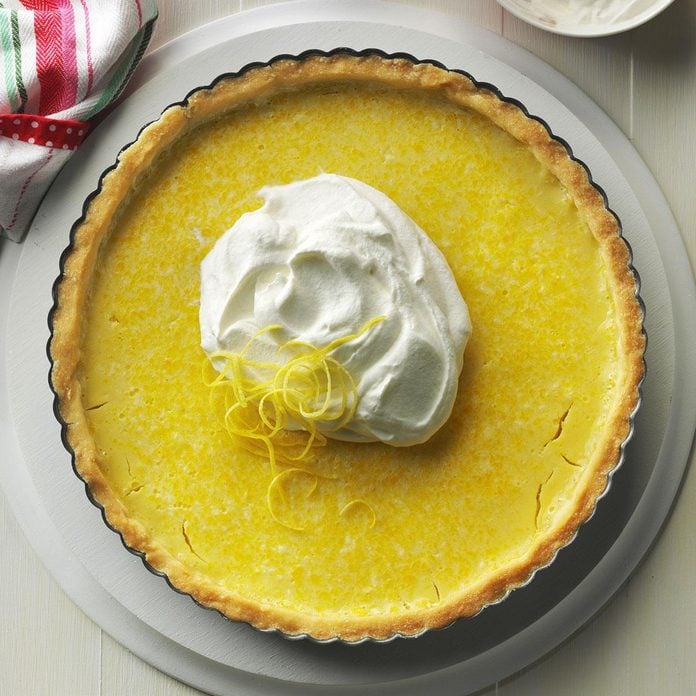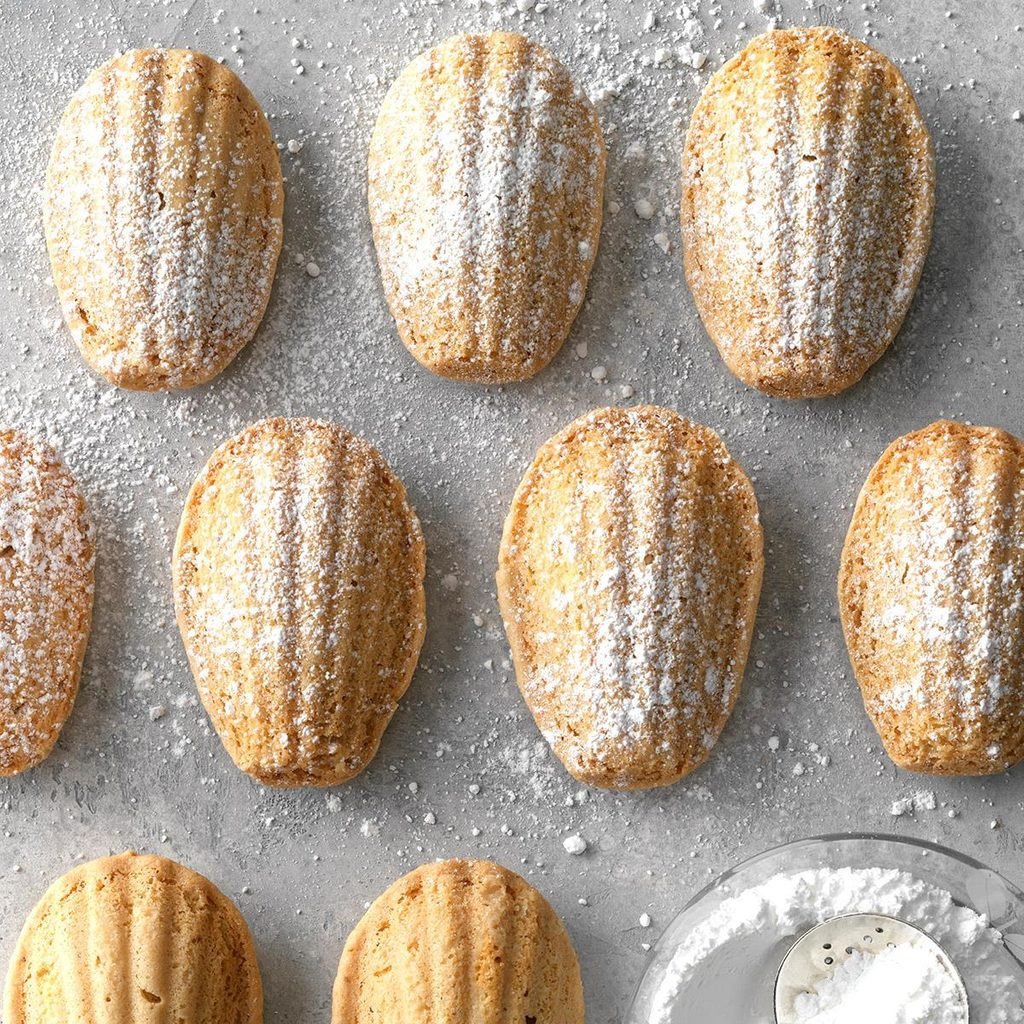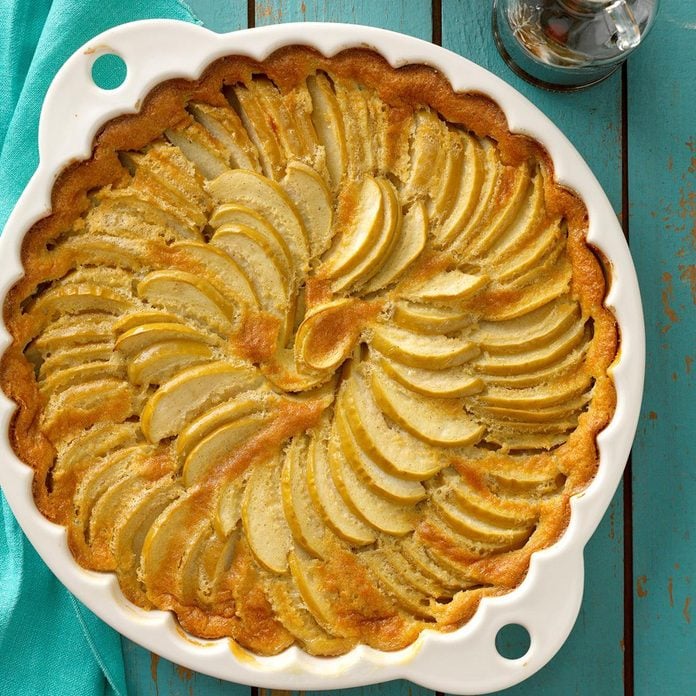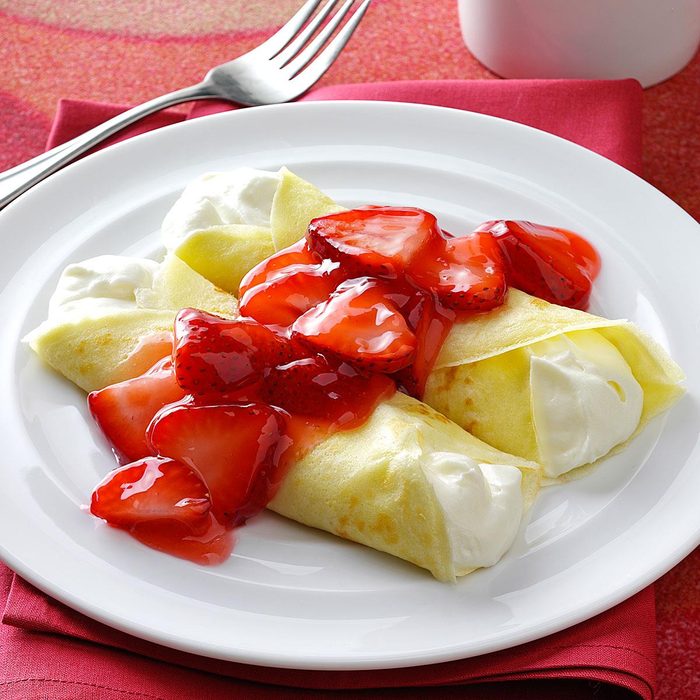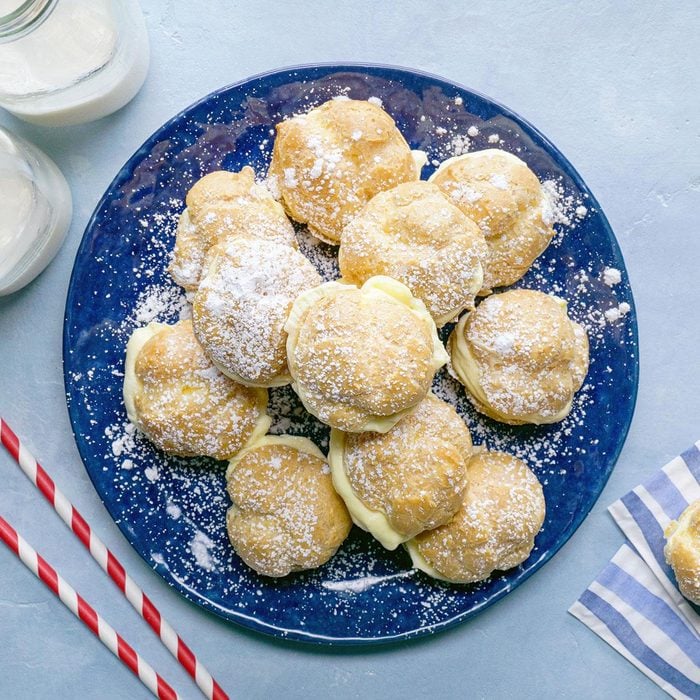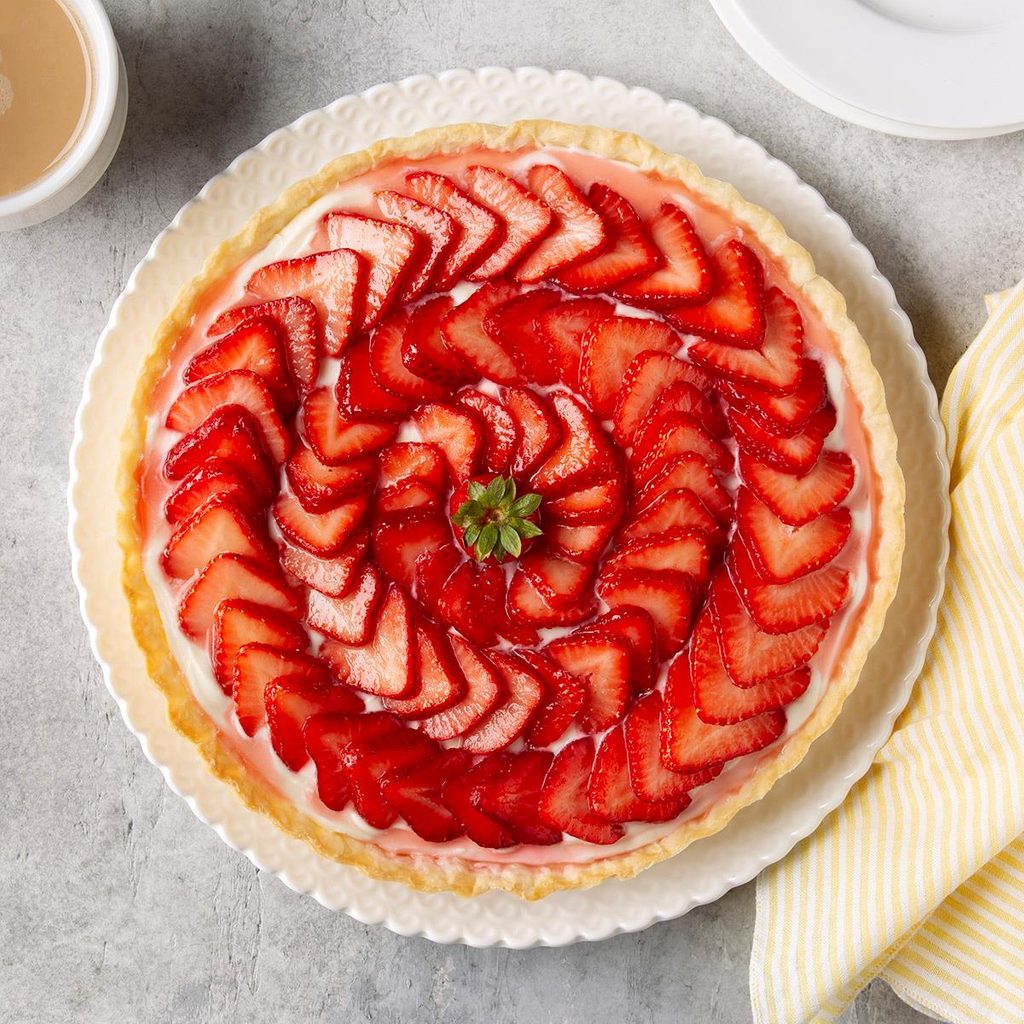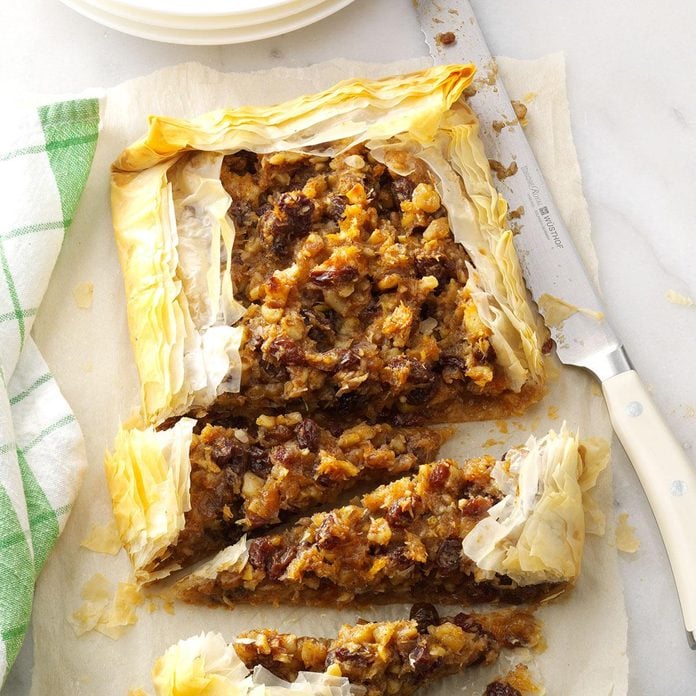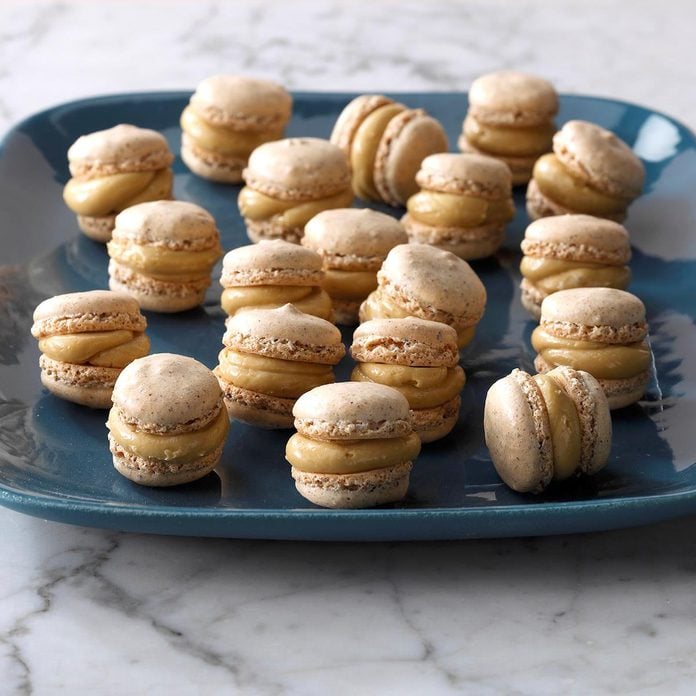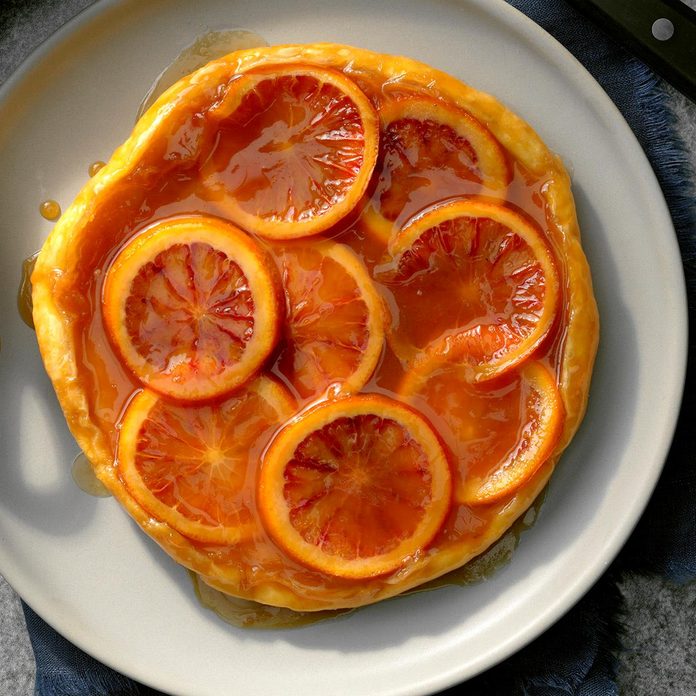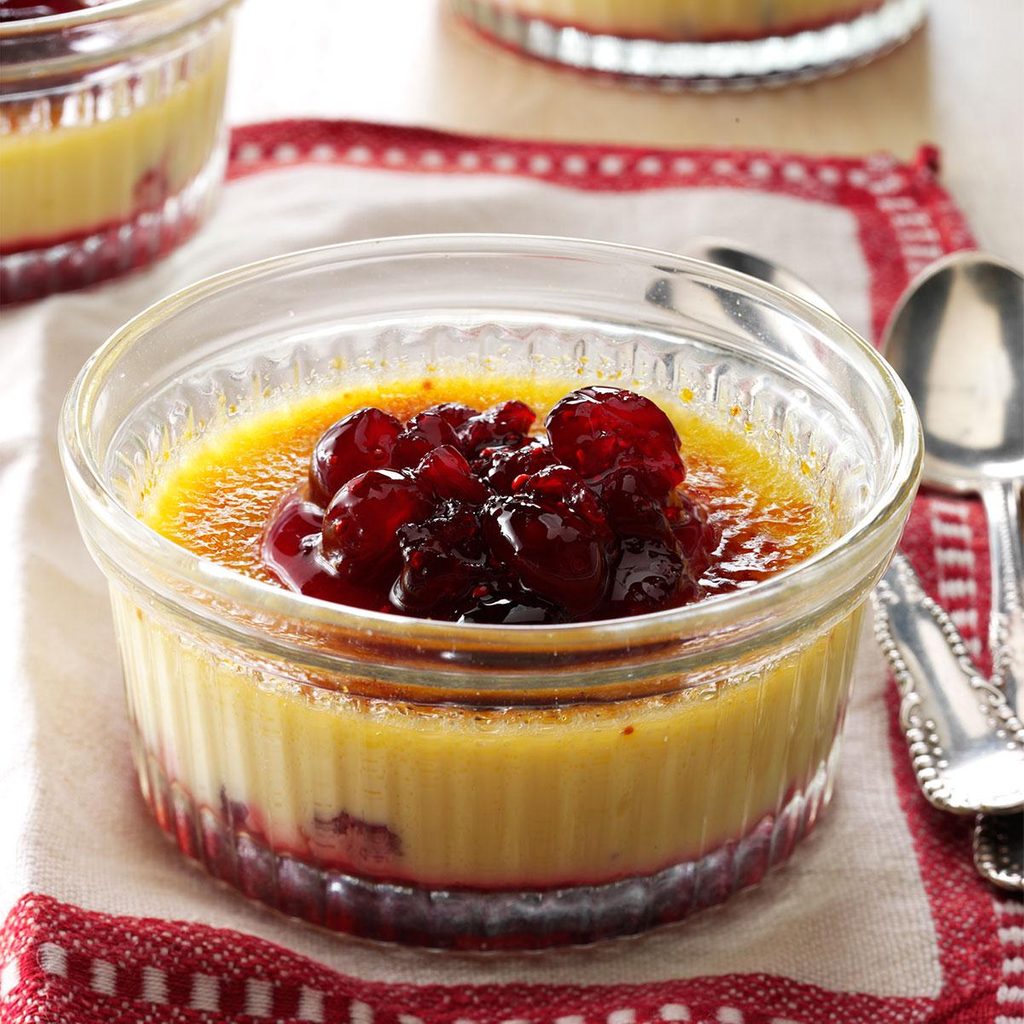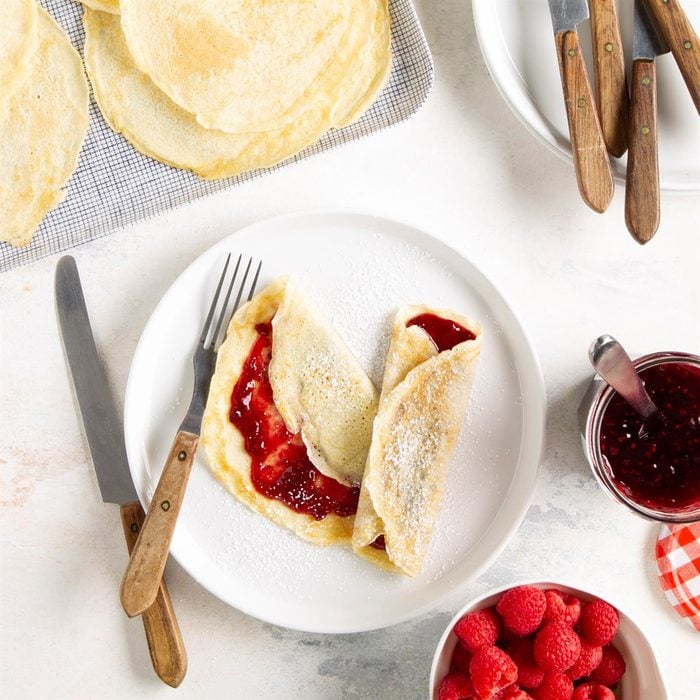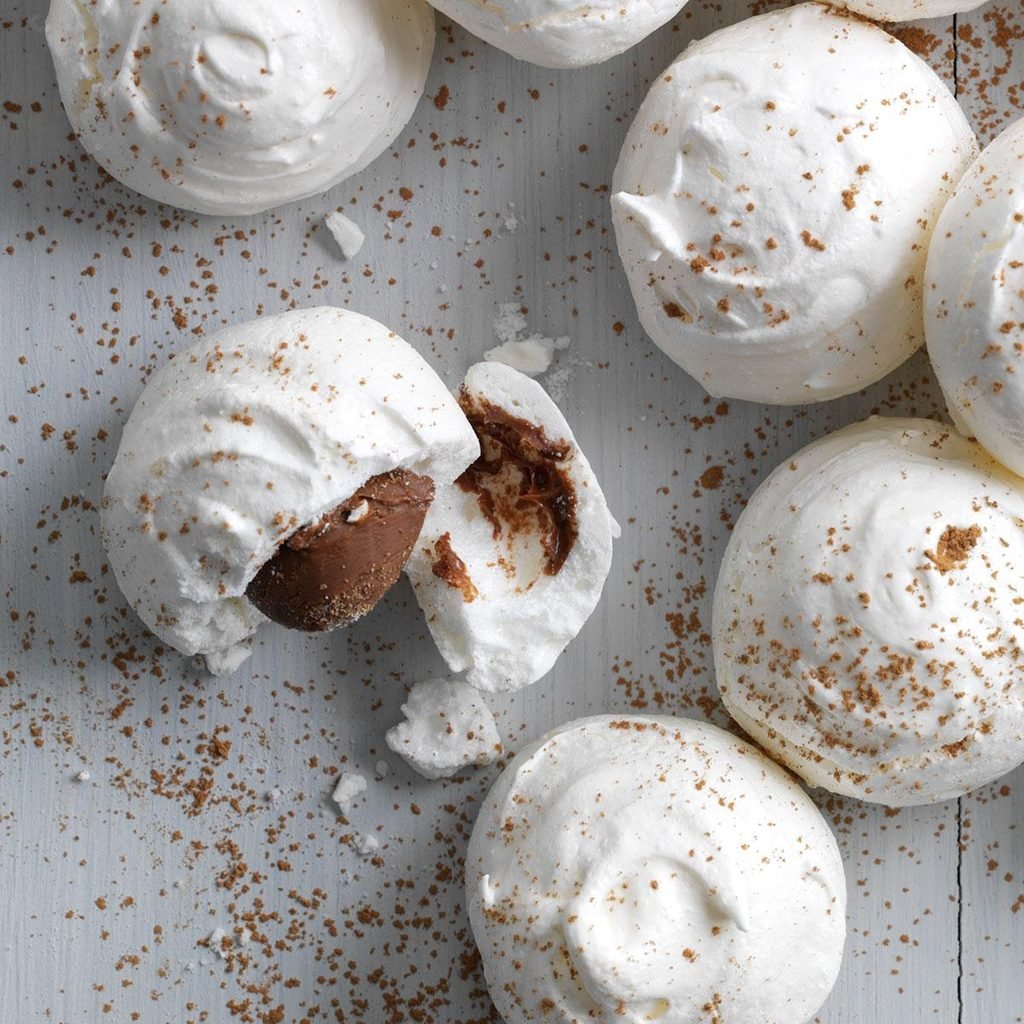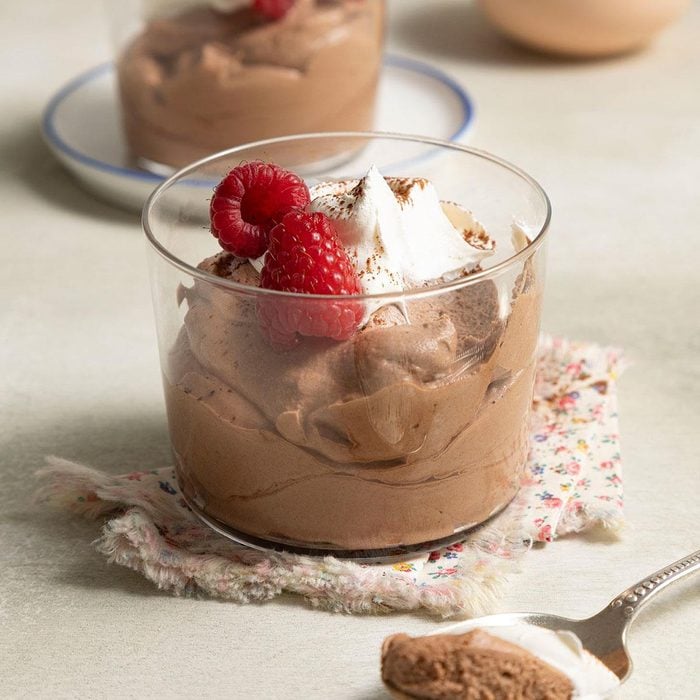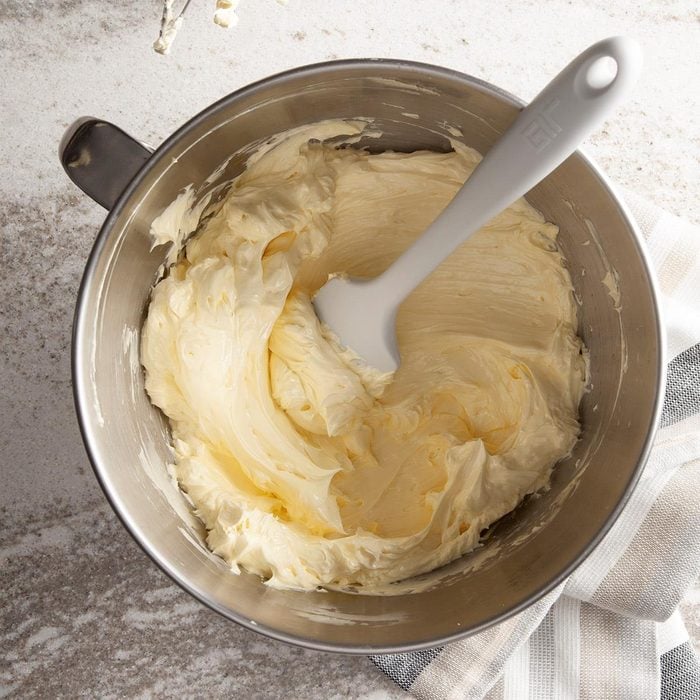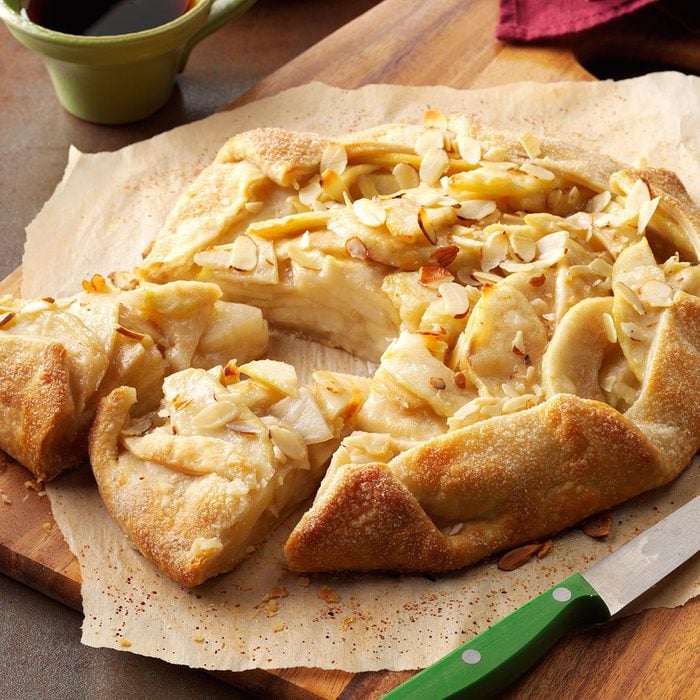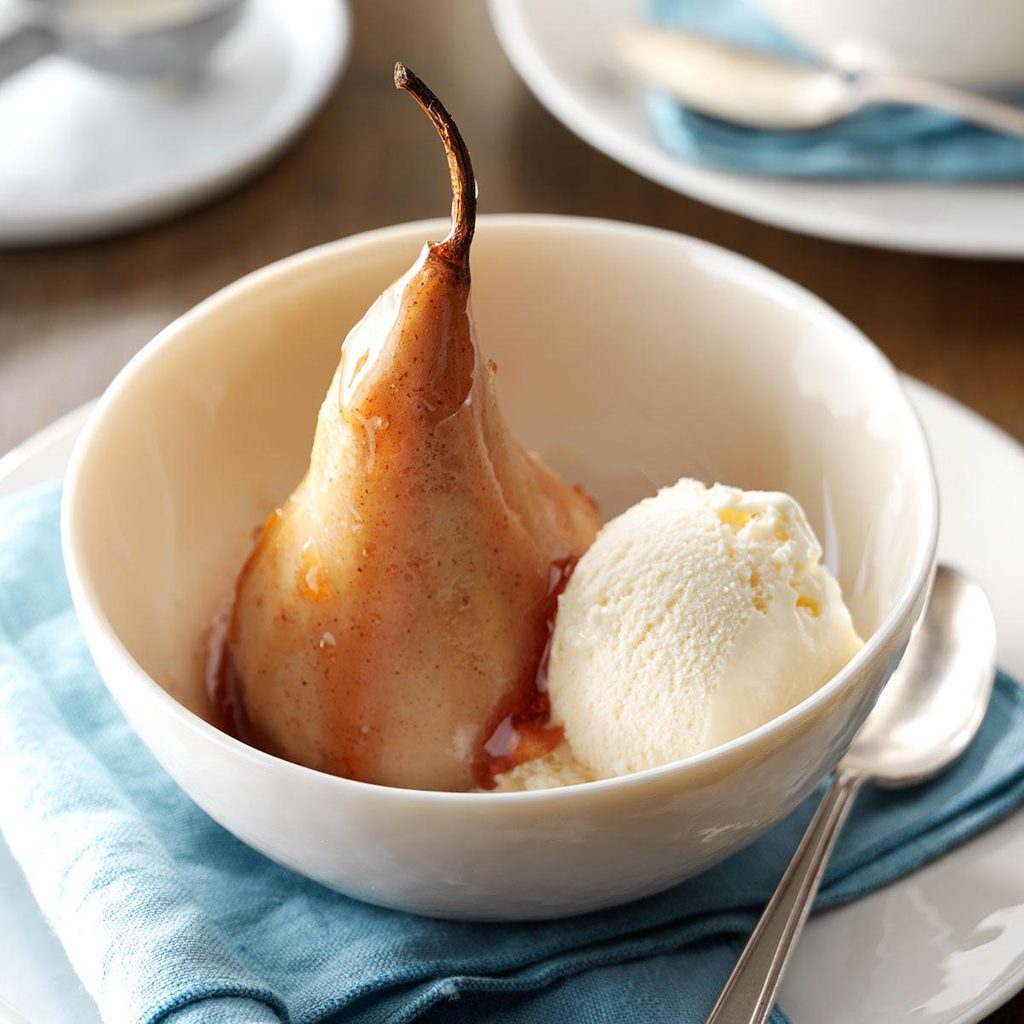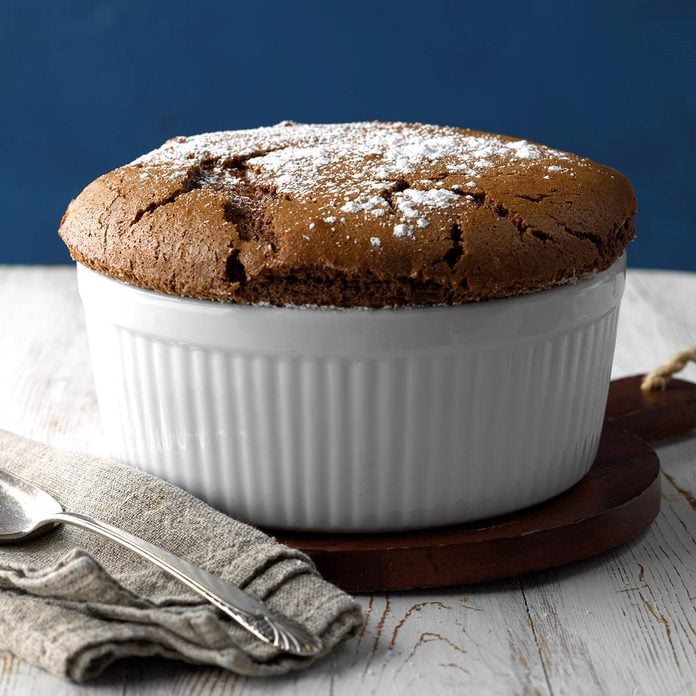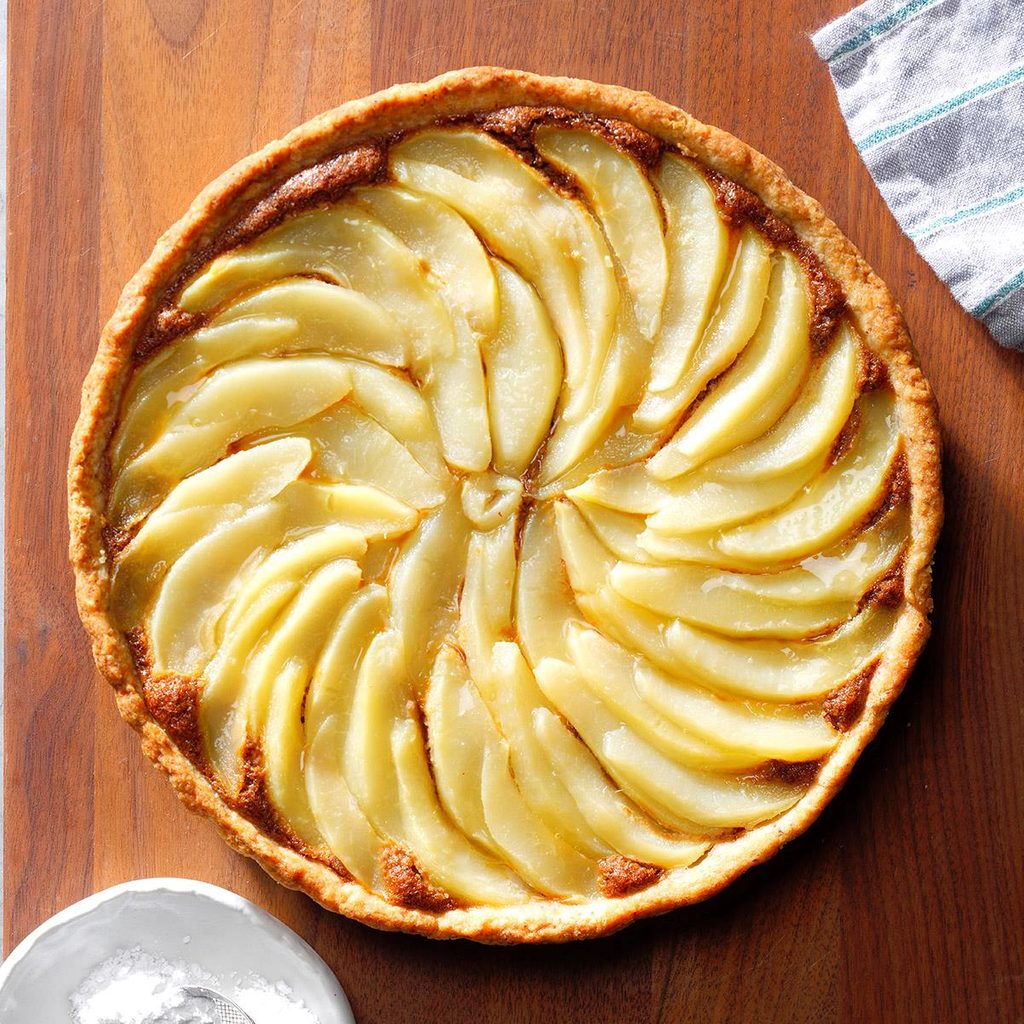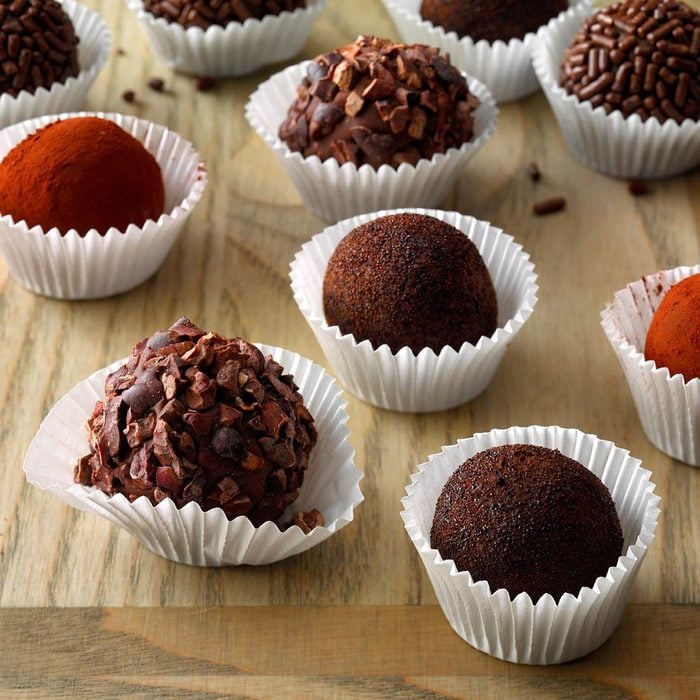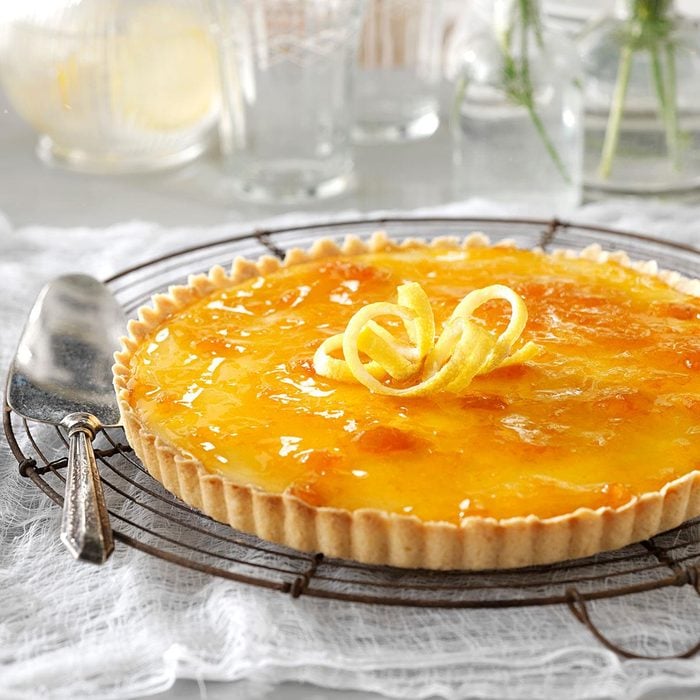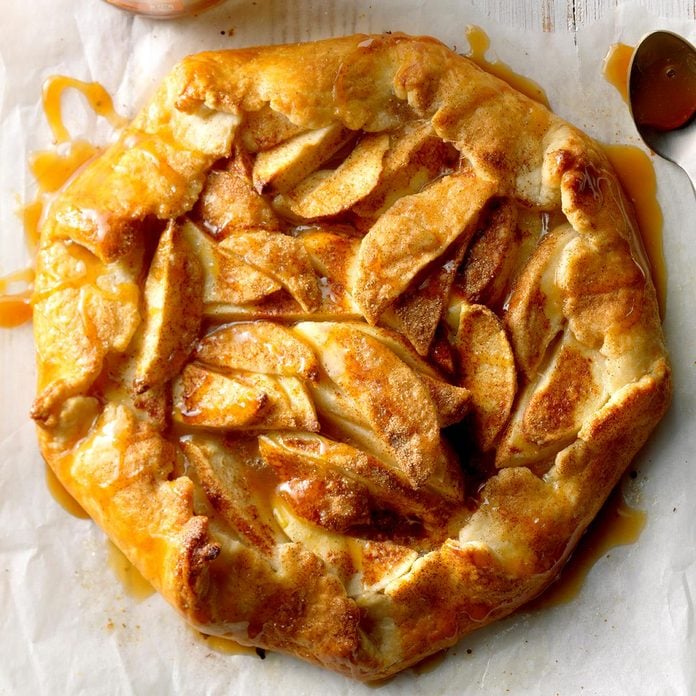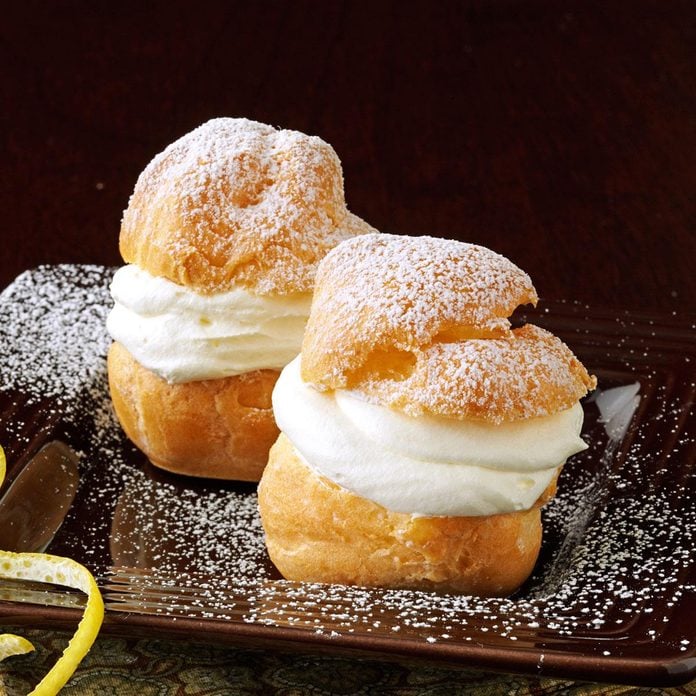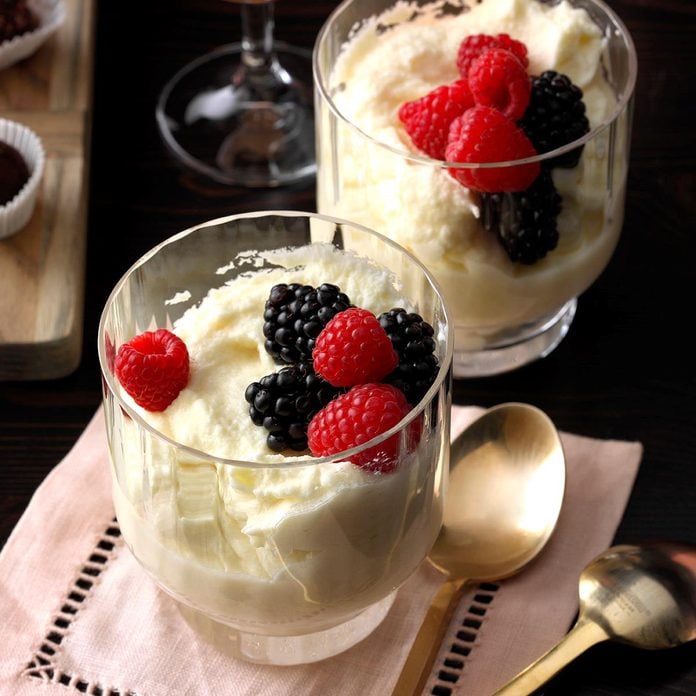For one of her first meals in Paris, Julia Child ate sole meuniere, a simple-seeming white fish cooked in butter and lemon. In her memoir, My Life in France, she called it “the most exciting meal of my life.” The soon-to-be famous chef was already in her 40s when she tasted this fish, and it may have launched her glorious career.
When we heard this, we just had to taste the fish that changed the course of home cooking!
How to Make Julia Child’s Sole Meuniere
What You’ll Need
- Skinless and boneless sole fillets, or other thin white fish fillet (I bought three for two hungry people)
- 1/4 cup flour on a plate
- 3 tablespoons clarified butter
- 4 tablespoons plain butter
- Parsley, minced
- One lemon, quartered
- Salt and pepper
Note: I followed the recipe in The Way to Cook, which provides detailed step-by-step instructions plus troubleshooting tips. There is an abbreviated, more conversational version in Julia’s Kitchen Wisdom, which you may prefer if you like your recipes relaxed and adaptable.
Initial Thoughts
At a glance, I expected this recipe to resemble all the other lemon-spritzed fish dishes I’ve eaten before. Tasty enough, but definitely with a whiff of low-calorie cooking about them. Then I remembered that, as in many classic French recipes, the trick is to showcase simple, quality ingredients with meticulous cooking technique.
With a gulp, I hoped my technique would live up to Julia’s direction.
 Kelsey Mueller for Taste of Home
Kelsey Mueller for Taste of Home
The First Steps
I called around town until I found a grocery store that sold sole fillets. I struck out on Dover sole, but found a respectable Pacific sole. At home, I left the fish out on the counter and readied my other ingredients. The fish cooks in a flash—the cooking time is less than four minutes—and I knew once I started, I wouldn’t have any time to pause. I sprinkled flour over a large plate, sliced my lemon, and chopped my parsley. (Confession: I rarely prep all my ingredients in advance, preferring to rush around like a maniac while I cook. Just having everything set out on the counter made me feel like a pro.)
To clarify butter, I dumped a few tablespoons into a glass dish and microwaved until the butter had melted and a thin layer of white froth floated on top. I skimmed off the froth with a spoon—these are the milk solids, which burn easily. Without them, the butter can withstand cooking at high heat. In other words, don’t skip this step! (Here’s the recipe in full detail.)
Heat the Pan and Prep the Fish
I set my heaviest cast-iron pan over medium-high heat—Julia’s recipe specifies that you want the fish to brown, which means you need a high initial heat. While it warmed up, I dredged the fillets in the flour and gave them a quick sprinkle of salt and pepper. (I kept glancing back at the book: Is that it? Yes, that’s really all you need.)
When I flicked water at the pan, the drops sizzled over the iron. Ready to cook! I poured in a few spoonfuls of clarified butter, which immediately began to hiss and sizzle. Quickly, I added the fish, placing each fillet so it wasn’t crowded in the pan. You want the fish to fry, not steam.
Love Julia Child? This Taste of Home editor cooked her classic recipes for an entire week.
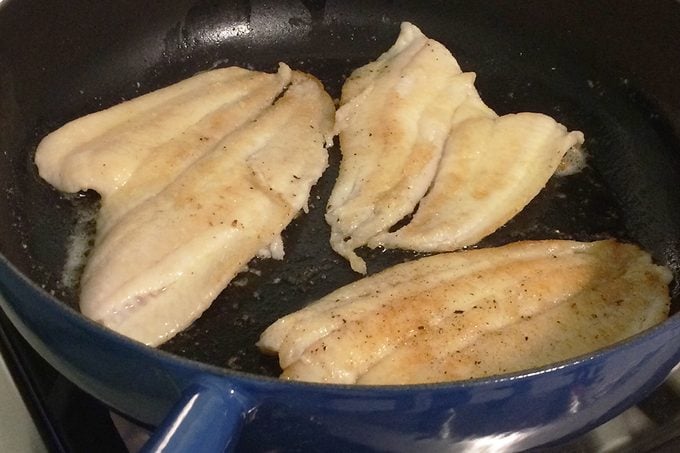 Kelsey Mueller for Taste of Home
Kelsey Mueller for Taste of Home
Cook ’til Just Done
The first side of the fish cooks for two minutes. The whole time, the butter wildly, cheerfully popped and danced, or, as Julia would say, “sputtered.” The browning butter smelled amazingly nutty and delicious. When the timer rang, I carefully eased a spatula under each fillet and gave it a cautious flip. So far, so good! The fillets had achieved a lovely golden brown crust.
I let the fish cook for another two minutes on the other side. Julia specifies that the fish should be just cooked: If it flakes, it’s overcooked. (Told you the technique was exacting!)
Here’s where I confess a misstep: When I tried to remove the fillets from the pan, they were stuck, and in my well-intentioned-but-probably-rough spatula-poking, two of the fragile fillets broke apart. Even with their beautiful brown crust, they looked a bit sad on the plate. What would Julia do? Cry? Never. I straightened my shoulders and tightened my apron. “Never apologize!” Julia would say. I showered the fish with parsley, hiding the worst of the damage.
Next up, adding another gob of butter to the pan to create a sauce. To help remove the stuck fish bits, I added the juice of half my lemon. By the time the butter melted, the sauce was done. As I poured it over the fish, the parsley sizzled up in the heat, and everything smelled so amazing I no longer cared about the broken fillets. Planning to make dessert? Check out this Julia Child’s chocolate mousse recipe.
The Verdict
As soon as I tasted the sole meuniere, I was sorry I’d ever doubted Julia. Outside, the fish was slightly crisp from browning; inside, it was meltingly tender. The sauce was so rich and decadent, like butter’s highest calling. And the lemon’s acidity balanced all the flavors and kept the rich dish from feeling heavy.
I was so fixated on the fish I forgot to make a side—whoops! Luckily I’d made three fillets for me and my husband. We polished them off. Best of all, the meal only took about half an hour to prepare. With practice, this recipe will become a muscle-memory meal for me: one of those dishes you could make in your sleep, but which never fail to impress. Brava, Julia!
Next time, I’ll try to finish off the meal with one of these incredible French desserts.
Chocolate-Glazed Raspberry Eclairs
I first made
choux pastry in high school for a French class assignment, and I was fascinated. Since then, chocolate-glazed raspberry eclairs have been my favorite pastry to make. I garnish each eclair either with a single fresh raspberry or with a sprinkling of crushed freeze-dried raspberries. —Elisabeth Larsen, Pleasant Grove, Utah
Looking for a fancy breakfast pastry? Learn how to make delicate, swirled
French cruller doughnuts at home.
Go to Recipe
PalmiersPalmiers take just two ingredients to make these impressive but easy-to-do French pastries, which are often called palm leaves. —Taste of Home Test Kitchen, Milwaukee, Wisconsin
French MacaronsLearning
how to make macarons takes a bit of time, but these delicious cookies are worth it. —
Josh Rink,
Taste of Home Food Stylist
French Butter CookiesThe Brittany region of France is known for its use of butter. These French butter cookies, also known as sable Breton, shine the spotlight on the famous ingredient. This recipe is mildly sweet, rich, crisp and has a hint of salt. You won't be able to resist having a second—or third. —Taste of Home Test Kitchen, Milwaukee, Wisconsin
French Hot ChocolateOne of my fondest memories of Paris was sipping a cup of thick, dark hot chocolate at one of their patisseries. French hot chocolate is velvety smooth, rich, decadent and almost the consistency of a molten chocolate bar. It is meant to be sipped slowly and savored. —Darlene Brenden, Salem, Oregon
Very Blueberry ClafoutisThis blueberry clafouti is somewhere between a fruit-filled pancake and a fruity egg custard. Wrong season for fresh berries? Use frozen berries thawed in a colander and discard the juice. —Ken Hulme, Venice, Florida
Meringue Snowballs In CustardMy family has passed down this elegant dessert generation by generation. It started with my Russian great-grandmother, who traveled to America more than 100 years ago. I love continuing the tradition with her recipe. —Tonya Burkhard, Palm Coast, Florida
Decadent Chocolate Crepe CakeNo other dessert has wowed family and friends the way this stunning crepe cake did the first time I made it. A showstopper in every sense of the word, it features layers of tender chocolate crepes and rich white chocolate buttercream frosting draped in a semisweet chocolate ganache. —Tina Sawchuk, Ardmore, Alberta
Rum Raisin Creme BruleeInspired by a favorite ice cream flavor, I created this make-ahead recipe to free up some time in the kitchen. You can also serve this as a custard if you choose to not caramelize the top. —Eleanor Froehlich, Rochester, Michigan
Springtime Beignets & BerriesI've always loved beignets, but never thought I could make them myself. Turns out they're easy! Sometimes I'll even make a quick berry whipped cream and pipe it inside for a fun surprise. —Kathi Hemmer, Grand Junction, Colorado
Tart & Tangy Lemon TartOur family adores lemon desserts. I often make this citrus tart for brunch. For extra special events, I bake it in my heart-shaped tart pan. —Joyce Moynihan, Lakeville, Minnesota
Hazelnut Madeleine CookiesThese soft, cakelike cookies have a delicate hazelnut flavor—perfect for making great memories! They’re baked in the distinctive shell-shaped madeleine pan, available in kitchen specialty stores. —Taste of Home Test Kitchen
Maple-Apple ClafoutisThis fruit pudding could not be easier to make! A traditional comfort food in France, it is often made with cherries. I use apples and maple syrup to give it a real Midwestern flair. —Bridget Klusman, Otsego, Michigan
Strawberry Creme CrepesI always feel like a French chef when I serve these pretty crepes. Although they take a little time to prepare, they're well worth the effort. My guests are always impressed. —Debra Latta, Port Matilda, Pennsylvania
Finger-Licking Good Mini Cream PuffsThis recipe is quick and easy to whip up and the kids will love it! They are perfect to pack for a picnic or to have as a snack for family game night I guarantee you can't eat just one…hey are so addicting & they're perfect for satisfying any sweet tooth! —Jennifer Erwin, Reynoldsburg, Ohio
Strawberry TartThis creamy strawberry tart boasts a crunchy chocolate layer tucked next to the crust. Try making individual tartlets instead of one big dessert. —Dawn Tringali, Hamilton Square, New Jersey
Lemony Walnut-Raisin GaletteThis flaky, buttery pastry dessert has a filling of fruit, walnuts, coconut and cinnamon. There's a lot to love! For even more appeal, dollop sweetened whipped cream on top of each serving. —Ellen Kozak, Milwaukee, Wisconsin
Hazelnut MacaronsYou don’t have to be an expert in French cooking to whip up these sandwich cookies. The crisp, chewy macarons require attention to detail, but they’re not hard to make—and they’re simply a delight, both for personal snacking and giving as gifts!
—Taste of Home Test Kitchen
Blood Orange Caramel Tarte TatinI never had blood oranges until I moved to California. The season is short, so I use them in everything while I can get them. That sweet orange flavor with some brown sugar is a perfect combination. Whenever I have something to go to, my friends demand that I bring this dessert. —Pamela Butkowski, Hermosa Beach, California. If you enjoyed this recipe, then you must try our favorite
pear tarte tatin.
Cranberry Creme BruleeDress up classic creme brulee with an easy-to-make cranberry sauce. The sweet-tart sauce compliments the rich, creamy custard. —Taste of Home Test Kitchen
Festive French PancakesNot quite as thin as true crepes, these light-as-a-feather pancakes are topped with preserves and a dusting of confectioners' sugar. They're elegant, so easy to make and say "Joyeux Noel" with delicious French flair!
Meringue KissesThere's a nice chocolaty surprise inside these sweet kisses. They're my husband's top choice each Christmas.—Tami Henke, Lockport, Illinois
Semisweet Chocolate MousseA friend shared this rich velvety chocolate mousse recipe with me. I love to cook and have tons of recipes, but this one is a favorite. Best of all, it's easy to make. —Judy Spencer, San Diego, California
Chocolate Cherry CrepesOne of the reasons that we love this impressive-looking recipe is that it's easy to make. We prepare the crepes and filling in advance, and assemble them and add the topping just before serving. —Taste of Home Test Kitchen
French ButtercreamFrench buttercream has a custard-like texture and is great if you're going to be piping shapes or decorations. —
Taste of Home Test Kitchen
Almond Pear TartI had never seen a "pie without a pan" until my daughter brought back this wonderful pear almond tart recipe from a Rotary Club exchange program in Belgium. It's still a family favorite after all these years. —Sherry LaMay, Capitan, New Mexico
Burgundy PearsThese warm spiced pears elevate slow cooking to a new level of elegance, yet they're incredibly easy to make. Your friends won't believe this fancy-looking dessert came from a slow cooker. —Elizabeth Hanes, Peralta, New Mexico
Baba au Rhum CakesDry and candied fruit stud this baba au rhum. The rum is subtle, so it is suitable as a dessert or on a brunch buffet. —Diane Halferty, Tucson, Arizona
Hot Cocoa SouffleA friend invited me to go to a cooking demo at her church years ago, and one of the recipes prepared was this luscious souffle. It was so easy—and absolutely delicious. —Joan Hallford, North Richland Hills, Texas
Chocolate Pear Hazelnut TartAs a teenage foreign exchange student in the south of France, I was horribly homesick. Then my host family's Grandmother Miette arrived and asked if I'd like to help her bake this nutty tart from scratch. It turned my trip around and inspired my lifelong passion for baking. Weighing ingredients, roasting nuts, kneading dough—the art of baking transcends language. —Lexi McKeown, Los Angeles, California
Chocolate TrufflesYou may be tempted to save these chocolate truffles for a special occasion since these smooth, creamy chocolates are divine. But with just a few ingredients, this truffle recipe is easy to make anytime. —Darlene Wiese-Appleby, Creston, Ohio
Strawberry Banana CrepesMy family often has company over for breakfast or brunch, and these light fruit-topped crepes are our favorite. The sweet sensations are as fast to make as they are fabulous. You can cook the crepes the night before, refrigerate them with waxed paper in between, then fill and top them in the morning.
—Shelly Soule
Las Vegas, Nevada
French Christmas CookiesThese moist treats will have everyone reaching for more. Folks tell me they enjoy these French Christmas cookies. In fact, the batches I make ahead for my family and
store in the freezer until Christmas seem to mysteriously disappear each year—even though the chocolate topping I put on before serving hasn't been added yet! —Judy Wilder, Mankato, Minnesota
Chocolate EclairsWith creamy filling and fudgy frosting, this chocolate eclair recipe is extra special. —Jessica Campbell, Viola, Wisconsin
French Lemon-Apricot TartIf you like the tang of citrus, you’ll love this lemon tart. The apricot preserves on top add a nice bit of sweetness. —Peggy Lunde, Costa Mesa, California
Raspberry MousseThis raspberry mousse recipe guarantees a creamy, smooth finale to any summer meal. —
Taste of Home Test Kitchen
Rustic Caramel Apple TartLike an apple pie without the pan, this scrumptious tart has a crispy crust that cuts nicely and a yummy caramel topping. —Betty Fulks, Onia, Arkansas
Lemon Cream PuffsThe fluffy filling for these light crisp shells has a delectable citrus flavor. —Doreen Martin, Kitimat, British Columbia
French Crescent RollsWhenever we have rolls and coffee after church, these come along with me. Here on the high plains, we've been raising cattle, wheat and daughters for 30 years. Our two oldest are grown, and our youngest just began college. —Betty Ann Wolery, Joplin, Montana
Banana Cream EclairsTo surprise my banana-loving family, I made this dessert for a reunion, where it stood out among the usual fare. These special treats are something to look at and mouthwateringly delicious. —Ruby Williams, Bogalusa, Louisiana
Elegant White Chocolate MousseSimply elegant is a fitting description for this smooth treat. Whipped cream teams up with white chocolate to make this easy white chocolate mousse recipe extra special. —Laurinda Johnston, Belchertown, Massachusetts
French Noisette CupsThe word “noisette” is French for hazelnut, and these delightful tassie-style treats have a yummy toasted nut flavor in a golden and delicious pastry. —Marie Rizzio, Interlochen, Michigan
Pistachio PalmiersMy family loves palmiers from the bakery, so I created my own recipe. These have a Middle Eastern twist with the addition of rosewater, honey and a touch of cardamom. They are light and crisp—a special treat for the holidays. —Deborah Hinojosa, Saratoga, California
Note: Every product is independently selected by our editors. If you buy something through our links, we may earn an affiliate commission.
